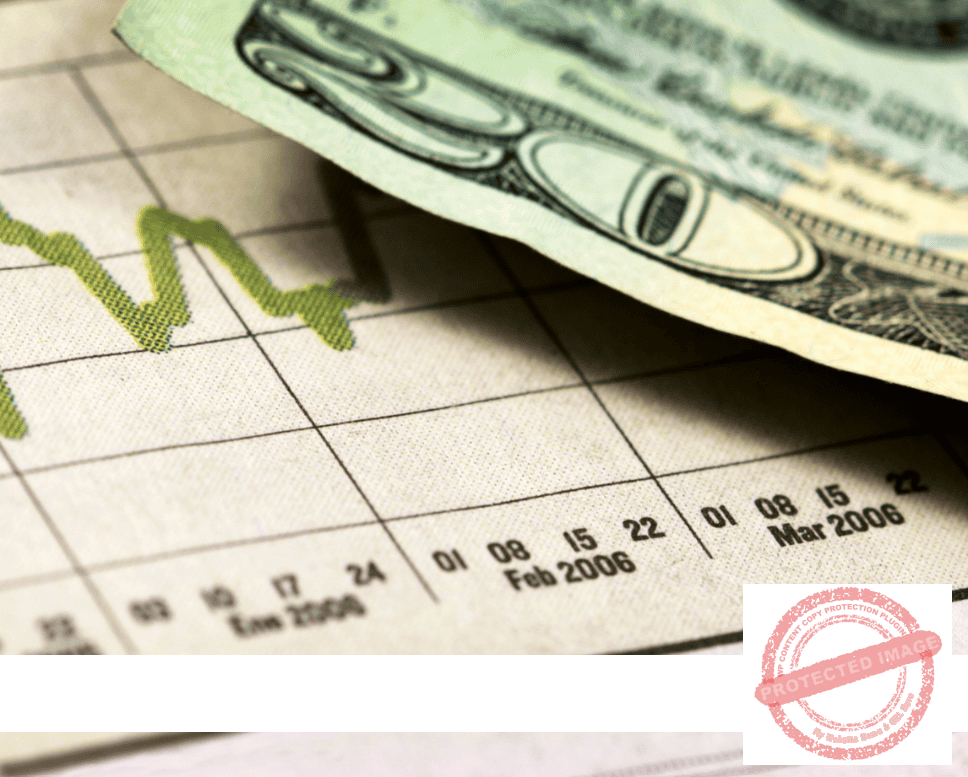Position Forex trading is a strategy that prioritizes long-term market trends in Forex.
This makes it ideal for traders who prefer a patient and methodical approach.
Position trading allows you to capitalize on large price movements over time, often spanning weeks, months, or even years. Unlike other strategies, such as swing or day trading, which focus on shorter-term gains, position trading aims to capture significant market shifts.
This article explores position trading in-depth, contrasts it with other popular strategies, and explains why it offers substantial advantages, particularly in Forex trading.
What is Position Trading?
Position trading is a long-term strategy focusing on capturing substantial price movements by holding trades for extended periods.
While day traders or swing traders aim for short-term profits by frequently entering and exiting the market, position traders take a much broader view and analyze the bigger picture.
They focus on fundamental factors influencing a currency’s value, such as interest rates, economic policies, and geopolitical events. By holding positions for weeks, months, or even years, position traders aim to benefit from broad market movements that smaller traders often miss.
This is especially important in the Forex market, where macroeconomic events that unfold over long periods can significantly influence currency pairs.
Position Forex traders typically use technical analysis to fine-tune their entries and exits but rely primarily on fundamental analysis to justify their decisions.

Key Characteristics of Position Trading
Long-Term Holding Period
One of the defining traits of position trading is its long-term focus.
Unlike day trading, where positions are opened and closed within the same day, or swing trading, where trades are held for a few days to a week, position trading involves holding trades for much longer.
Forex could mean holding onto a currency pair for several weeks, months, or years to capitalize on major price movements. The key to position trading is identifying long-term trends and being willing to wait patiently for the market to develop those trends fully.
This approach requires a different mindset from the short-term mentality of day or swing trading. Instead of chasing quick profits, position traders aim for large gains over a prolonged period.
Focus on Macroeconomic Trends
Position trading places a significant emphasis on understanding the larger economic environment. This is where fundamental analysis comes into play. Rather than relying solely on technical indicators, position traders closely monitor macroeconomic factors such as:
- Interest rates: Central bank policies regarding interest rates can profoundly affect currency values. For instance, a country with rising interest rates is likely to see its currency strengthen over time, making it an attractive target for position traders.
- Inflation rates: Position traders must understand how inflation impacts a country’s economy and currency value. Higher inflation typically leads to a currency losing value, while lower inflation or deflation can strengthen a currency.
- Geopolitical events: Political stability, international conflicts, and trade agreements can all influence currency movements over the long term. Position traders closely monitor these events to determine how they may affect the currencies they trade.
- Employment data and GDP growth: Strong economic growth and robust job numbers often lead to an appreciation of a country’s currency, while weaker figures can signal a currency decline.

Lower Trading Frequency
Position traders execute far fewer trades compared to day or swing traders.
This is largely because they are waiting for the perfect setup and are willing to hold trades for long periods. By reducing the number of trades, position traders are less exposed to short-term market noise and volatility, often leading to impulsive trading decisions.
Lower trading frequency means that traders can avoid the costs associated with frequent trading, such as spreads and commissions.
This helps reduce trading expenses and minimizes the emotional toll of frequent market involvement.
Reduced Monitoring
Since position traders hold trades for long periods, they don’t need to monitor their positions constantly.
This contrasts with day trading, where you must watch the markets daily to make rapid decisions. Position traders, on the other hand, can set their trades and monitor them less frequently, checking in weekly or even monthly, depending on market conditions.
This makes position trading particularly attractive for traders with full-time jobs or other commitments that prevent them from dedicating daily hours to trading.
Why Position Trading is Superior to Swing and Day Trading
Time Efficiency
One key advantage of position trading is its time efficiency. Day trading and swing trading require significant time and attention.
Day traders must constantly monitor the market, analyzing every movement and making quick decisions. Though less intense, swing traders must frequently check the market to capture short- to medium-term price swings.
In contrast, position trading allows traders to set their trades and step away from the screen for extended periods.
Because position traders focus on long-term price movements, the constant attention required by shorter-term strategies is unnecessary.
This makes position trading ideal for people who cannot dedicate a full day to trading, such as those with full-time jobs or other responsibilities.

Lower Transaction Costs
Every time a trade is executed in the Forex market, traders incur transaction costs, such as the bid-ask spread and broker commissions.
Day traders, who execute multiple trades daily, can see these costs add up quickly. Swing traders also face these costs, though less frequently.
Position traders, by contrast, make far fewer trades. This reduced trading frequency means lower cumulative transaction costs, which can significantly impact profitability over the long term, especially for traders who rely on leverage.
By reducing the number of trades, position traders can save on spreads, commissions, and slippage, making the strategy more cost-effective.
Reduced Emotional Stress
Trading is often emotionally charged, especially in short-term strategies like day trading and swing trading.
The constant monitoring and rapid decision-making required can cause stress, especially in volatile markets. This emotional pressure can lead to impulsive decisions, such as overtrading or holding onto losing trades in the hope of a reversal.
Position trading significantly reduces this emotional burden.
By focusing on the long term, position traders are less concerned with daily price fluctuations and can avoid the stress that comes with short-term volatility.
Because they are not constantly in and out of the market, they can maintain a more detached, objective approach to their trades.
Capitalizing on Major Trends
One of the greatest strengths of position trading is its ability to capture the full extent of major market trends.
Day and swing traders close their positions too early, missing out on larger moves. Position traders, however, aim to hold onto trades for the entire trend duration, from start to finish.
This approach allows position traders to maximize their potential profits.
For example, suppose a currency pair enters a long-term bullish trend due to rising interest rates or strong economic growth. In that case, a position trader can hold onto their trade for the full duration of the trend, reaping much larger rewards than a day or swing trader who closes their position early.

Lower Risk of Overtrading
Overtrading is a common problem in day trading and swing trading.
The temptation to constantly be in the market can lead you to take unnecessary risks, often leading to losses. The frequent decision-making process required by these strategies can also cause mental fatigue, increasing the likelihood of poor trade decisions.
Position traders are much less prone to overtrading because they are highly selective.
Each position is thoroughly researched and carefully planned. With a long-term focus, they are less concerned with making numerous trades and more focused on finding high-conviction opportunities.
By reducing the number of trades, position traders lower their exposure to the risks associated with overtrading.
Increased Use of Fundamental Analysis
While day and swing traders focus more on technical analysis to make quick decisions, position traders rely heavily on fundamental analysis.
This means they are deeply involved in understanding the economic factors driving currency values, such as central bank policies, GDP growth, and inflation trends.
By focusing on long-term economic outlooks, position traders can make more informed decisions about an economy’s performance. This gives them an edge over traders primarily concerned with short-term price action.
Position traders are not swayed by temporary market noise but make decisions based on substantial economic trends.
Challenges and Risks of Position Trading
While position trading offers many advantages, it has challenges and risks. Traders must be prepared for the potential downsides, including:
Patience and Discipline
Position trading requires a high degree of patience and discipline.
Since trades are held for long periods, it can take time to see the results. You must resist the urge to close trades prematurely or to react to short-term market fluctuations that don’t align with your long-term strategy.
This can be especially difficult during periods of market volatility, when prices may move sharply in the opposite direction before eventually aligning with the anticipated trend.

Long-Term Market Risk
While position traders benefit from long-term trends, the market can sometimes move unpredictably due to unforeseen geopolitical events or shifts in economic policies.
Sudden changes in central bank policies or international conflicts could disrupt a well-planned position.
This unpredictability means you must be prepared for the possibility that even well-researched trades could go against them.
Opportunity Cost
Position trading focuses on long-term gains, meaning traders may miss out on shorter-term opportunities.
By holding onto trades for extended periods, they forgo the chance to profit from smaller price movements that day or swing traders would typically target.
This can create an opportunity cost if shorter-term movements are highly profitable.
How to Get Started with Position Trading
Adopt a Long-Term Outlook
Position trading requires a shift in mindset from short-term profits to long-term wealth-building.
You must be willing to hold trades for months or even years and stay focused on the big picture.
Setting realistic goals and avoiding the temptation of chasing short-term market swings is essential.
Master Fundamental Analysis
Successful position traders have a deep understanding of fundamental analysis.
They track key economic indicators, such as interest rates, inflation, GDP growth, and employment data, to understand how these factors influence currency values.
Position traders can identify long-term opportunities and make informed decisions by analyzing these trends.

Use Technical Indicators for Entry and Exit Points
While fundamental analysis is the backbone of position trading, technical analysis can help determine the best times to enter and exit a trade.
Indicators such as moving averages, momentum, Japanese candlesticks, chart patterns, and support and resistance levels can help position traders to fine-tune their trades and avoid mistimed entries.
Manage Risk
Risk management is crucial in position trading, as in other trading strategies.
Traders should always use stop-loss levels to protect themselves from unexpected market reversals and only risk a small percentage of their capital on each trade.
By managing risk effectively, position traders can ensure that no single trade can wipe out their account.
Stay Informed and Be Patient
The Forex market is always evolving, and successful position traders stay informed about global events, central bank policies, and economic developments.
Staying up-to-date on these factors helps traders make more accurate long-term predictions.
Additionally, patience is key in position trading. Trades can take time, so you must be prepared to wait for their positions to reach their full potential.
Conclusion
Position trading offers significant advantages for Forex traders seeking a more relaxed and methodical approach to the market.
Compared to day and swing trading, position trading requires less time monitoring the markets, incurs lower transaction costs, and minimizes emotional stress.
Position traders are well-positioned to maximize their potential profits by focusing on capturing major long-term trends while avoiding the pitfalls of overtrading.
While it requires patience, discipline, and a deep understanding of macroeconomic factors, the rewards of position trading can be substantial.
For those looking to take a long-term view of the Forex market, position trading provides an excellent opportunity to grow wealth over time without being bogged down by the short-term noise that characterizes other trading strategies.
What’s the Next Step?
Consider how you can use position Forex trading profitably.
In addition, look for opportunities to incorporate a longer-term perspective in your trading. Once you’re ready to trade, choose a strategy and process you believe will work for you.
If you need help developing an analysis process, you can use our Six Basics of Chart Analysis.
If you’re unfamiliar with the Six Basics, you can learn them here for free.
The “Six Basics” will give you a strong foundation in chart analysis, which you can incorporate with what you’ve learned about how to end a losing streak.
In addition, when you get the “Six Basics,” you’ll also get Forex Forecast delivered to your inbox every Sunday.
Forex Forecast includes:
- Trade Ideas and Analysis
- I will use the Six Basics of Chart Analysis and Advanced Strategies to show you the trade opportunities I’m watching.
- Case Studies from Around the Web
- Watch how applying the Six Basics worked on some of the best, most profitable trades.
- Trading Education Guides and Videos
- Want to learn most Six Basics techniques and advanced strategies?
- I produce videos and guides to help you learn and improve trading practices.
- Links to New Articles
- I publish new articles on topics traders will want to know about every week, and you can find out when they post.
- Positionforex.com News
- Did something change at positionforex.com? Learn about it here first!
- Links to upcoming webinars
- Attend free webinars to improve your trading.
- And Much More
- Tools, Membership-only Videos, and more will be released in the Forex Forecast.
The best part – it’s completely free.

Frequently Asked Questions
What Is Position Forex Trading and How Does It Work?
Position Forex trading is a long-term strategy where traders hold positions for weeks, months, or years to profit from major market trends.
It focuses on fundamental analysis, such as economic data and interest rates, rather than short-term price movements. Traders use technical indicators to time entries and exits.
How Is Position Forex Trading Different From Day and Swing Trading?
Position trading involves holding trades for longer periods than a day or swing trading.
Day traders close trades within a day, swing traders hold for days or weeks, while position traders focus on long-term trends and hold for months or years. Position trading also requires less frequent monitoring and fewer trades.
What Are the Main Advantages of Position Forex Trading?
The main benefits include:
- Less time needed: Traders don’t need to monitor markets constantly.
- Lower costs: Fewer trades mean reduced fees.
- Less stress: Focus on long-term trends, which reduces emotional pressure.
- Bigger gains: Capture the full extent of major market trends.
What Are the Risks Associated With Position Forex Trading?
Risks include:
- Patience required: Holding trades for long periods can be challenging.
- Market unpredictability: Unexpected events can affect long-term positions.
- Missed short-term opportunities: Position traders may miss out on shorter-term profits.
Who Should Consider Position Forex Trading?
Position trading suits those who prefer a long-term approach, have patience, and can follow macroeconomic trends. It’s ideal for traders who want to minimize daily market monitoring and are comfortable with a lower-stress trading style.

